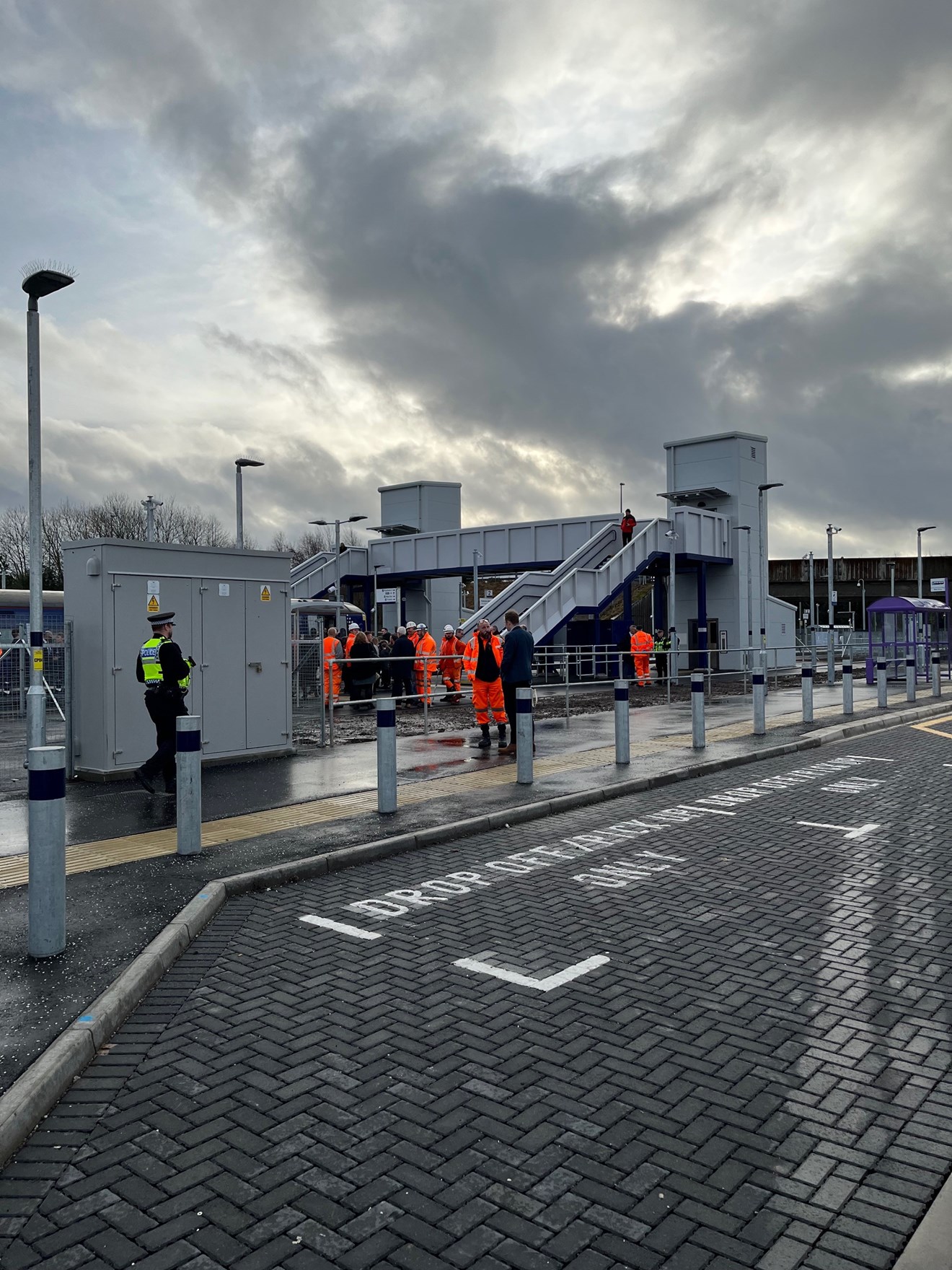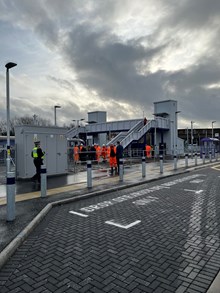Scotland’s newest railway station is set to benefit from state-of-the-art signalling technology which will transform the everyday journeys of people in the north east of Scotland and beyond.
Inverness Airport station, which officially opened on 2 February, will use signalling technology manufactured by Siemens Mobility in the UK - the first time the innovative modular system has ever been used in Scotland.
The Inverness station is Scotland’s first new airport station in nearly three decades and improves the overall connectivity of the Highlands and Islands region.
The station’s new signalling system brings together the best in modular, digital, and network-based technology. Installed as part of the Signalling Collaborative Partnership – an initiative developed and delivered by Siemens Mobility and Network Rail – it will improve journey efficiency, as well as the carbon footprint and cost efficiency of Scotland’s rail lines, especially in rural areas.
Inverness Station is the first railway station in Scotland to use the future-proof solution, which is also being installed as part of a project to improve the travel time between Aberdeen and the central belt, helping to transform the everyday journey for rail passengers.
The 80-strong Siemens Mobility team – based out of Glasgow – installed the system, including ten new signals, 30km of signalling cable and 7km of power cable. The system allows for testing in a factory environment, making installation easier and more straightforward, whilst lightweight technology cuts down on the need for heavyweight machinery and construction, providing both environmental and cost savings.
By introducing the technology to Scotland, Siemens Mobility is helping to improve the experience for passengers – delivering smoother and safer journeys while reducing the operating cost for Network Rail.
Siemens Mobility’s careful consideration of embodied carbon also greatly reduces the station’s climate impact, and the solution is compatible with future technology, including the European Train Control System (ETCS). The technology will see a reduction in maintenance hours, providing operational and cost benefits.
The technology is central to the infrastructure behind the new station layout, which features a double-track, enabling a higher frequency of journeys. The delivery of Scotland’s newest railway station has been done in collaboration with Rail Systems Alliance Scotland and BAM Nuttal.
Commenting, Campbell Braid, Delivery Director at Siemens Mobility, said:
“We are proud to deliver this cutting-edge technology for the first time to Scotland and specifically to Inverness. Our partnership with Network Rail has yielded real, tangible benefits for the new rail station in Inverness and will result in safer, greener, more efficient travel.
“Our task was to pioneer a new approach to the re-signalling of rural lines, with the primary aim of reducing both installation and ownership costs, whilst at the same time providing an enhanced experience for passengers.
“The result of our partnership is a future-proof system, developed specifically for low-density rural lines to deliver reduced material costs, rapid and low-cost installation and much reduced cost of maintenance. Together, the Signal Collaborative Partnership is working to transform the everyday journeys, create a better experience for passengers across Scotland whilst playing its part in meeting the country’s ambitious net zero targets.”


